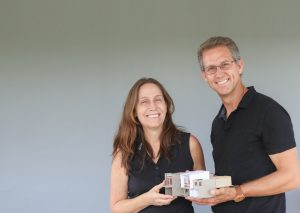
- This event has passed.
Case Study: Inverse Costa Rica – Walkable Tower
September 9, 2020 @ 4:00 pm - 5:00 pm PDT
$5.00 – $20.00
Case Study: Inverse Costa Rica – Walkable Tower
Learning Units: 1 LU (applied)
Registration is at a sliding scale – please give what you can.
This is a virtual event. Virtual meeting information will be email directly to registrants.
Architect: Inverse Project
In a new AIA|LA series, architecture firms will present new design paradigms and constructions techniques through in depth case studies. A 14 story tower, that features a set of exterior ramps and walkways that wrap around the building and will function much like the High Line in New York, is the subject of this case study led by Richard Hammond, AIA, of Inverse Project.
Inverse Project is based in San Jose Costa Rica as is the client who approached the firm to build a multi-residential project on a lot where she owned an art gallery in a part of San Jose that is more highly dense and offers more street life than other areas. The program for the project includes a double height art gallery at ground level. And a cafe and exterior area for art classes or music performances on the roof. Twelve stories of art lofts, sixty units lie between.
To create areas of interaction between residents and take advantage of San Jose’s climate, Inverse Project is rethinking the residential tower as a vertical, walkable experience that is designed to create a sense of community for the inhabitants through this connected public amenity. Along the path will be edible gardens, communal spaces and city viewing areas. The building’s circulation paths are thought of as a continuous trail that takes the explorer from the street the roof and back again. These exteriors will also include installations documenting the artists who were featured in the original art gallery on the property; the client asked the architects for a strategy to create a legacy to these individuals with which she had lengthy histories.
Inverse Project proposed art lofts rather than apartments for the project’s residential component in keeping with the site’s history, and also because the programs for these units could be more affordable for Costa Ricans. Like many cities in the United States, purchasing an apartment in San Jose is quite expensive for residents.
The project includes sloping setbacks to adhere to planning codes in San Jose on the residential side. On the commercial side, the building meets the street. A small garden will be featured as an amenity on the ground floor adjacent to the art gallery.
Presenter:

Richard Hammond, AIA
Richard is the founder of Inverse Project. Originally from Zimbabwe, graduated Architecture school in South Africa in 1997. Then moved to LA in 1999 with Clive Wilkinson Architect for 6 years where he worked on Chiat Day and the Googleplex. Then 13 years at Gensler working in the role as Design Director and Principal in both Los Angeles and Costa Rica. He Moved to Costa Rica in 2013 with Gensler. In 2019 he Co- founded Inverse Project with his wife Daniela Hammond.
Learning Objectives:
+ Architecture practice in Costa Rica.
+ Mid Rise design in Costa Rica
+ Aspects of projects that are suitable for a Covid world.
+ Designing sustainable buildings in a tropical city.
Image Credit: Inverse Project







